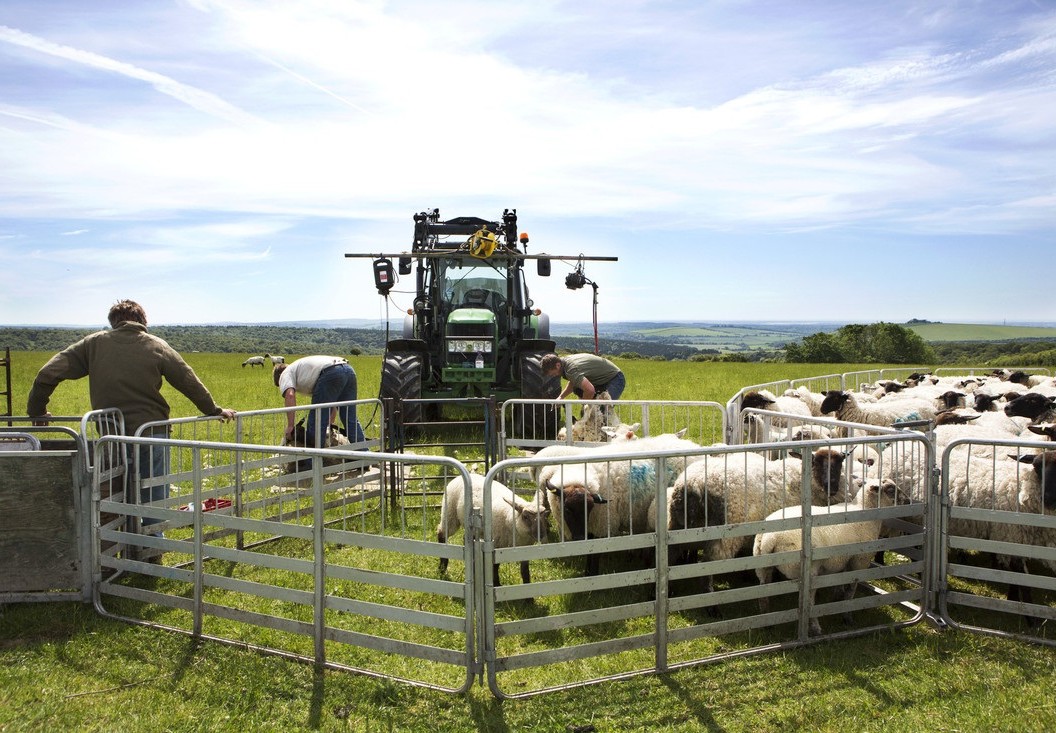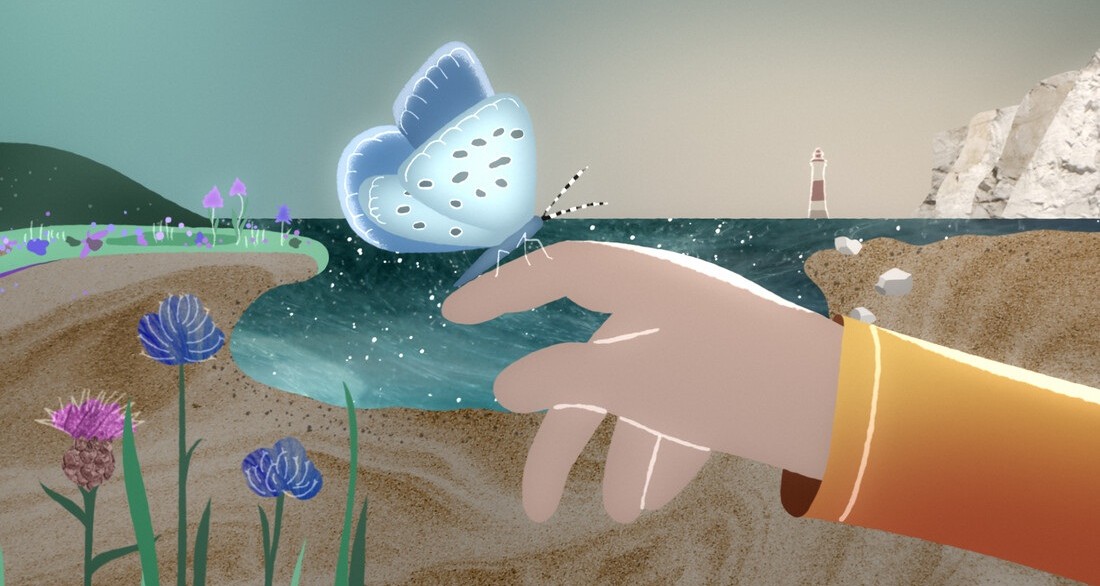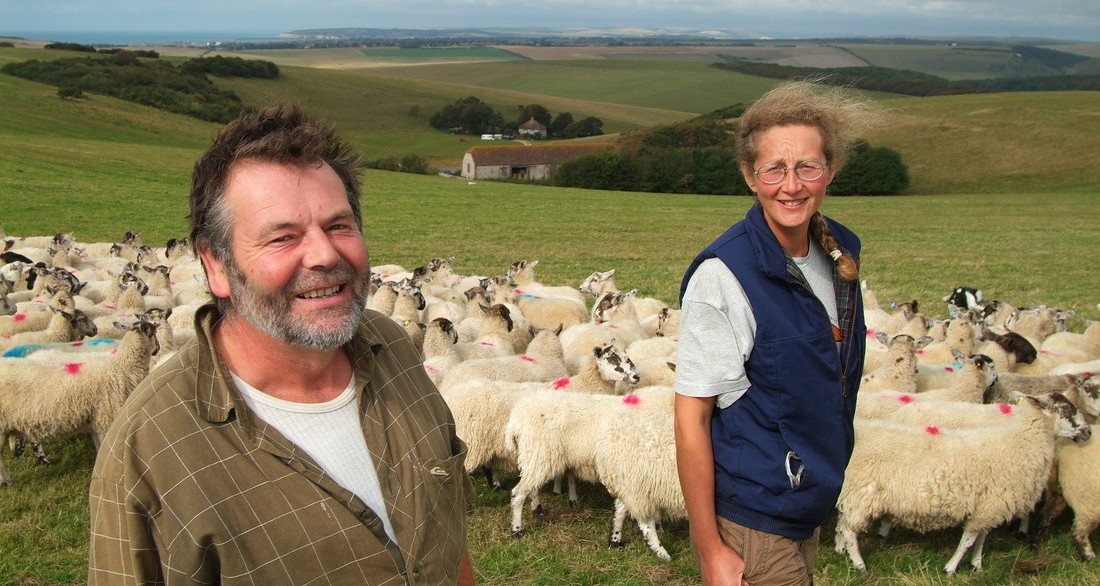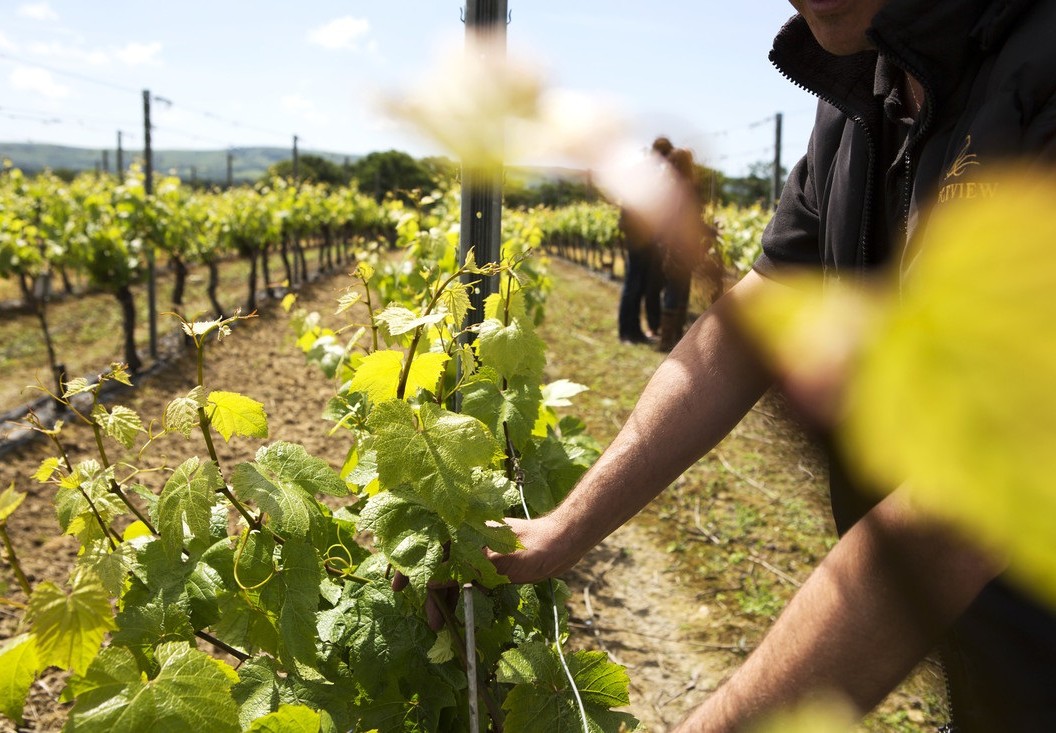| Land Management |
Land Management InitiativesSupport for landownersThe South Downs National Park Authority (SDNPA) works in partnership with landowners to improve and enhance the beautiful landscape we live and work in. Several initiatives are available for farmers and land managers, big and small, with a stake in the land of the South Downs National Park (SDNP). These include funding to support nature improvements, access to useful carbon calculators, and support with master planning for large scale estates. 
Farming in Protected LandscapesThe SDNP is one of England’s 44 protected landscapes, made up of 10 National Parks and 34 Areas of Outstanding Natural Beauty (AONBs). These landscapes, like the SDNP, are living, working landscapes that support a huge range of habitats and species, and are enjoyed by millions of people every year. Farming played a key role in shaping the landscape mosaic we see today. Over 75% of the SDNP is farmed – by small family-run farms, by large farming estates and by every size in between. The mixture of livestock and arable farming is a core part of what makes the South Downs feel so special. As we transition from the European Union’s Common Agricultural Policy (CAP) to a new agricultural support system, farming is going through a significant period of change. To help farmers and land managers in the country’s protected landscapes during this time, and in recognition of the role they play in managing these areas, Defra has developed the Farming in Protected Landscapes (FiPL) funding programme as part of its Agricultural Transition Plan. FiPL runs from July 2021 to March 2024. View More 
Farming Carbon CalculatorUse the Farm Carbon Calculator to work out the carbon footprint of your whole farm and to generate individual product footprints. It will show you the total carbon emissions, offsets and carbon balance of your business, helping you rethink the way you operate your business. View More
Nature Recovery - Call for sitesTogether, farmers, land managers and National Parks will play a significant part in nature recovery. Our National Parks form the backbone of the nation’s nature recovery network. They’re places where wildlife flourishes, habitats are cared for, and where everyone can experience nature and wildlife at their best. National Parks, including the SDNP, are working together to deliver a collective response to the nature crisis – and they need the unrivalled hyper-local knowledge that only you, as farmers and landowners, have. There’s no ‘right’ size or ‘right’ place required to play a key role in helping National Parks deliver on nature recovery. Nature recovery can happen anywhere, at any scale. The SDNPA supports nature recovery at all levels by offering advice and helping to make recovery projects happen.
Find out how your land can help, from providing a wildlife corridor to restoring ponds. View More
BeelinesOnce extensive, chalk grassland now covers just 4 per cent (5,608ha) of the SDNP. Many of the South Downs’ chalk grassland sites were ploughed up during World War II and never returned to their natural state. Rather, farming methods have intensified even further. Over time, vital grassland habitat has become fragmented, making it harder for key pollinator species, such as bees and the beautiful, bright Adonis blue butterfly, to move around the countryside to sites than need pollination. Since April 2019, the SDNPA has worked with farmers and partners to develop wildflower corridors. Landowners, farmers, partner organisations, schools and Local Authorities within the SDNP can put forward their ideas for projects for funding support, such as hedgerow planting. 
The Aquifer Partnership (TAP)The chalk of the South Downs holds a vital natural resource: an aquifer that supplies the water in our taps. But it’s threatened by pollution and the pressures of a growing population. TAP is a programme set up to protect the precious water held beneath our feet. It works with those with a stake in the land, such as farmers, greenkeepers and horse owners, to trial the best ways to water crops, raise animals and so on while minimising impact on our water supply. TAP also teams up with towns, communities, schools and businesses to help deliver clean water.
There are all sorts of ways you can help preserve the South Down’s water supply. Get in touch to find out about access to grants, workshops and more. View More
Trees for the DownsThe treescape in the SDNP is precious. We have more woodland than any other National Park in England or Wales, but that’s changing. Pests and diseases are negatively impacting the air we breathe, the beauty we see and the wildlife that needs our support. Trees for the Downs is planting 100,000 trees in community spaces, along roads and popular walking routes. Their work is vital for tackling climate change. If you’d like to help by planting some trees, keep an eye on their website. Each spring for the next five years, Trees for the Downs will release an applications round for grants. 
Farm ClustersThere are six established Farm Cluster Groups in the SDNP. Together, they cover around two-thirds of the SDNP area. Each group has between 22 and 45 members working under the simple concept that they can achieve more together than they can on their own. Their overarching goal is to improve and enhance the environment. Each cluster decides their own aims and objectives around hyper-local issues regarding species and habitats. South Downs Farming has detailed information about the concept and each of the cluster networks. Find out more about your nearest farm cluster. view more
Whole Estate PlansThe SDNPA works with land-owning organisations to develop Whole Estate Plans that help them collaborate to achieve the ambitions and purposes of the National Park. The SDNP includes significant privately owned and farmed areas of the landscape. It is also the most heavily populated National Park in the UK. The management of this landscape and the benefits National Park status
brings is intrinsically linked to many of the large estates and farm operations located within the National Park. Whole Estate Plans are part of the strategic policy of the Local Plan, which the SDNPA adopted in July 2019. A WEP is a non-statutory plan that demonstrates the overall position and aspirations of an organisation. Plans do not have to cover a specific time period and may be updated to reflect changes in circumstance or withdrawn if appropriate. Plans can also be presented for endorsement by the National Park. As a general rule, WEPs are designed to support land holdings in excess of 400 acres, with multiple diverse activities and employing or having residents in excess of 30 people. Having said that, no organisation that can show practical reasons for the preparation of a WEP will be discouraged. Learn More |